Compare
Overview
Cursor AI vs Gemini for math Comparison in different aspects of AI services with data mining from genuine user reviews & ratings, including: ALL,Interesting,Concise,Helpfulness,Correctness. AI store is a platform of genuine user reviews,rating and AI generated contents, covering a wide range of categories including AI Image Generators, AI Chatbot & Assistant, AI Productivity Tool, AI Video Generator, AI in Healthcare, AI in Education, AI in Lifestyle, AI in Finance, AI in Business, AI in Law, AI in Travel, AI in News, AI in Entertainment, AI for Kids, AI for Elderly, AI Search Engine, AI Quadruped Robot.
Reviews Comparison
Recommended Tags
-
codemonkey 2024-10-31 17:12Another more complicated task I tested on Cursor Code Editor is to write a python code to implement the Transformer function as in paper "Attention is all you need". The code I am writing include function name "def transformer(x):" and some of the beginning lines like "q=torch.linear(". And with the suggested code, I wrap up the transformer function in less than one minutes. So it can really help me increase the productivity of writing code. The only drawback is when I want to modify the code and use backspace to delete some lines, it seems like Cursor doesn't know what to do and give no hints for a while. Unless I start writing something else. And the newly suggested code will usually be quite different from the previously suggested ones. ``` ## Machine Learning ### Input import torch def transformer(x): ndim = 16 q=torch.linear(ndim, ndim)(x) k=torch.linear(ndim, ndim)(x) v=torch.linear(ndim, ndim)(x) attn = torch.matmul(q, k.transpose(-2, -1)) attn = attn / math.sqrt(ndim) attn = torch.softmax(attn, dim=-1) ### Cursor Suggested Code: out = torch.matmul(attn, v) out = torch.linear(ndim, ndim)(out) return out ```
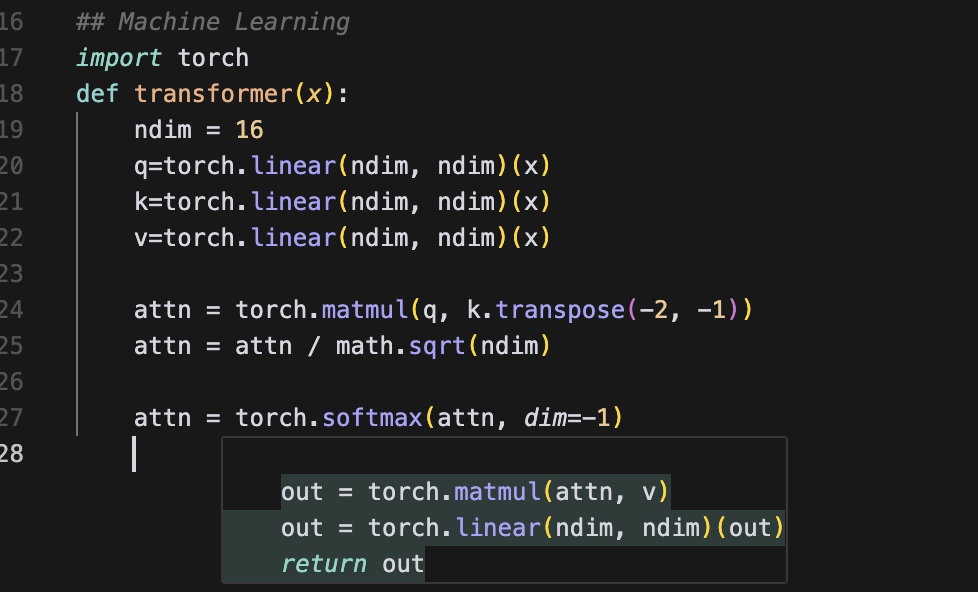

-
MayZhou 2024-09-14 12:33I asked Gemini to solve this graduate-level machine learning math problem "Use Newton method to calculate the exact value of \sqrt{2}. Provide Detailed proof step by step". And Gemini provides correct and concise answers to this question. It breaks down into a few steps: 1. Initial Guess, which is to Let's start with an initial guess, say x 0=1. This is a reasonable guess since 1^2 is close to 2. 2. Newton's Method Formula 3. Iterations 4. Convergence and get the conclusion Newton's method converges quadratically, which means that the number of correct digits approximately doubles with each iteration. As we continue iterating, we'll get closer and closer to the exact value of \sqrt{2}.
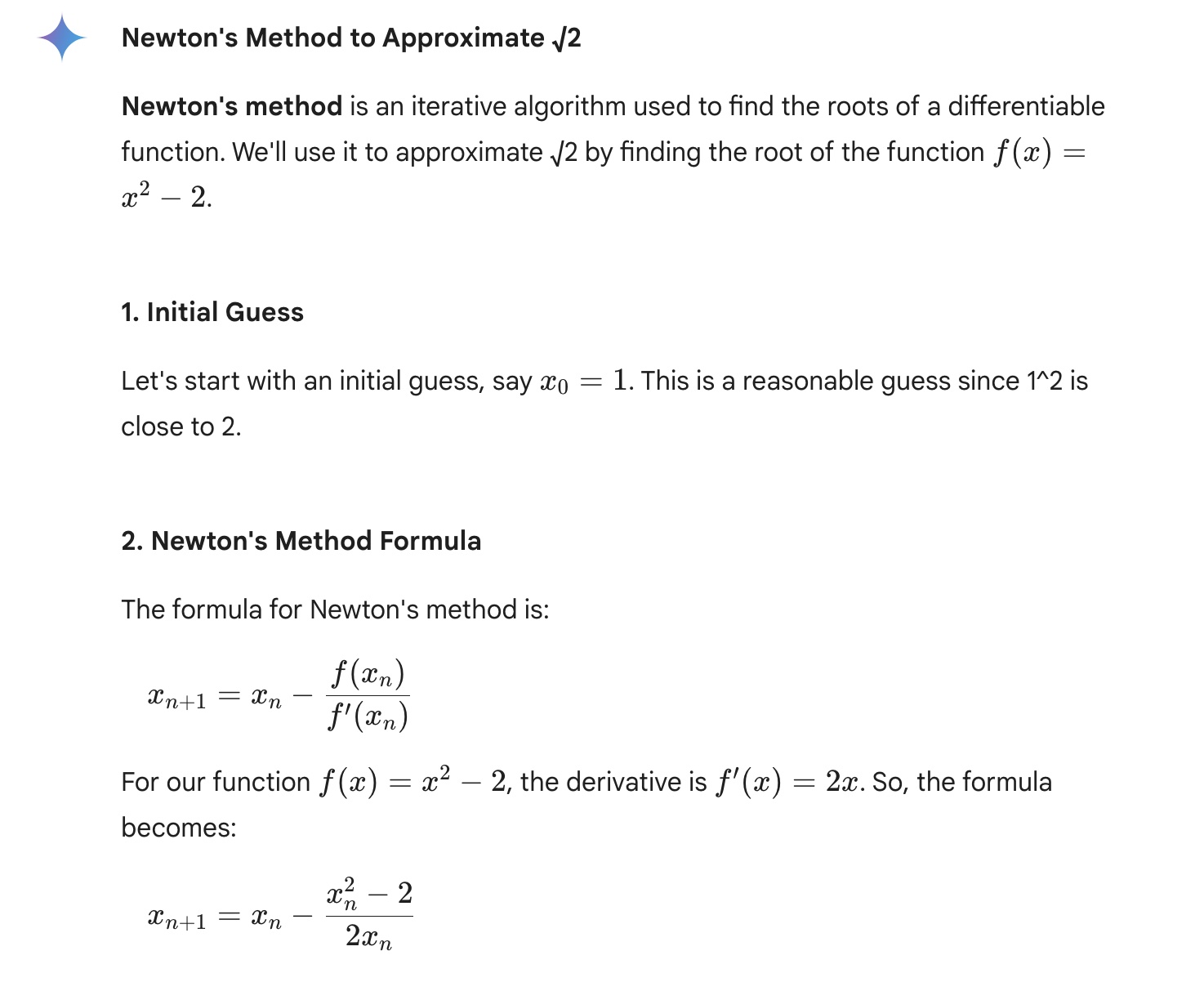
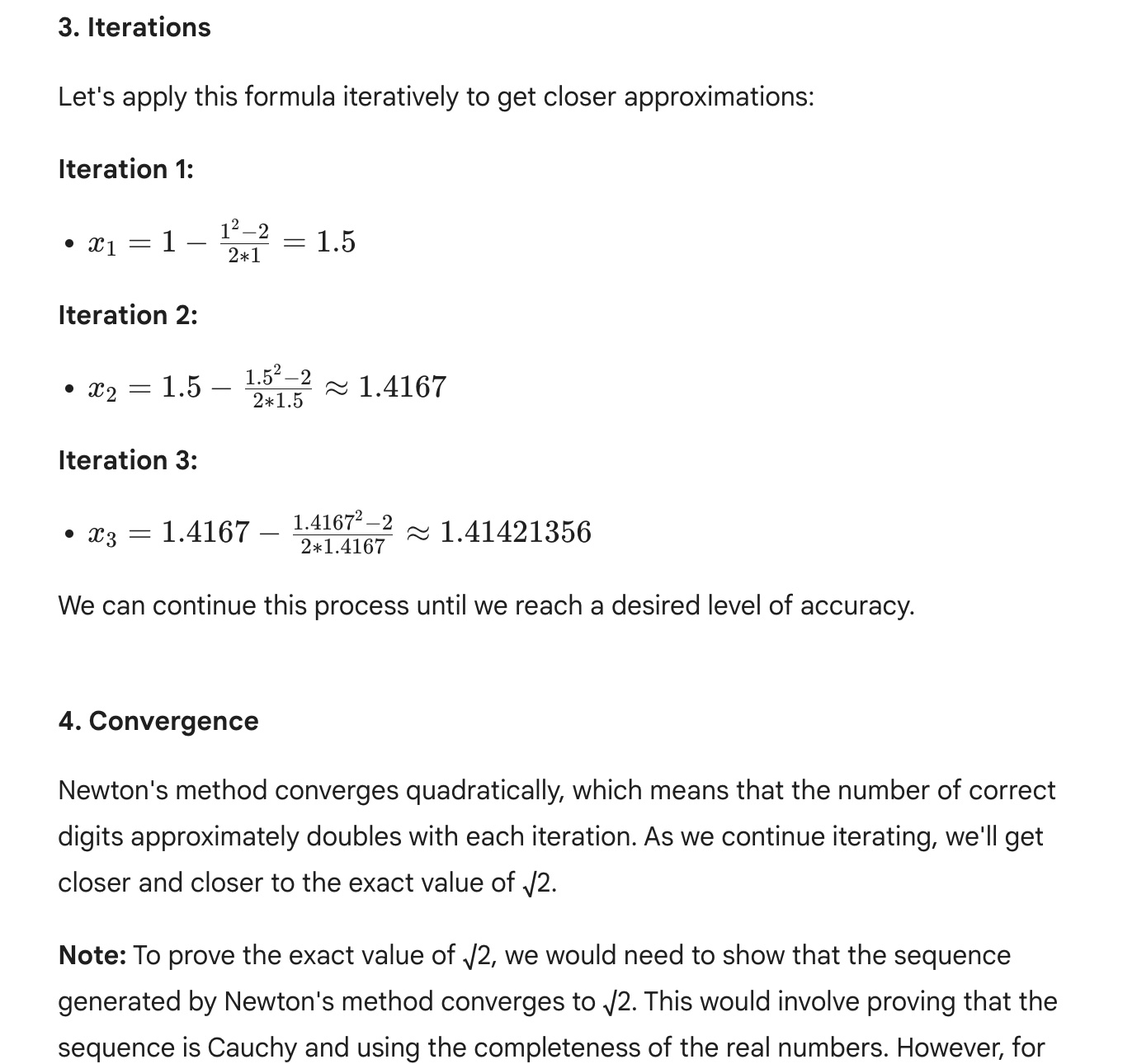
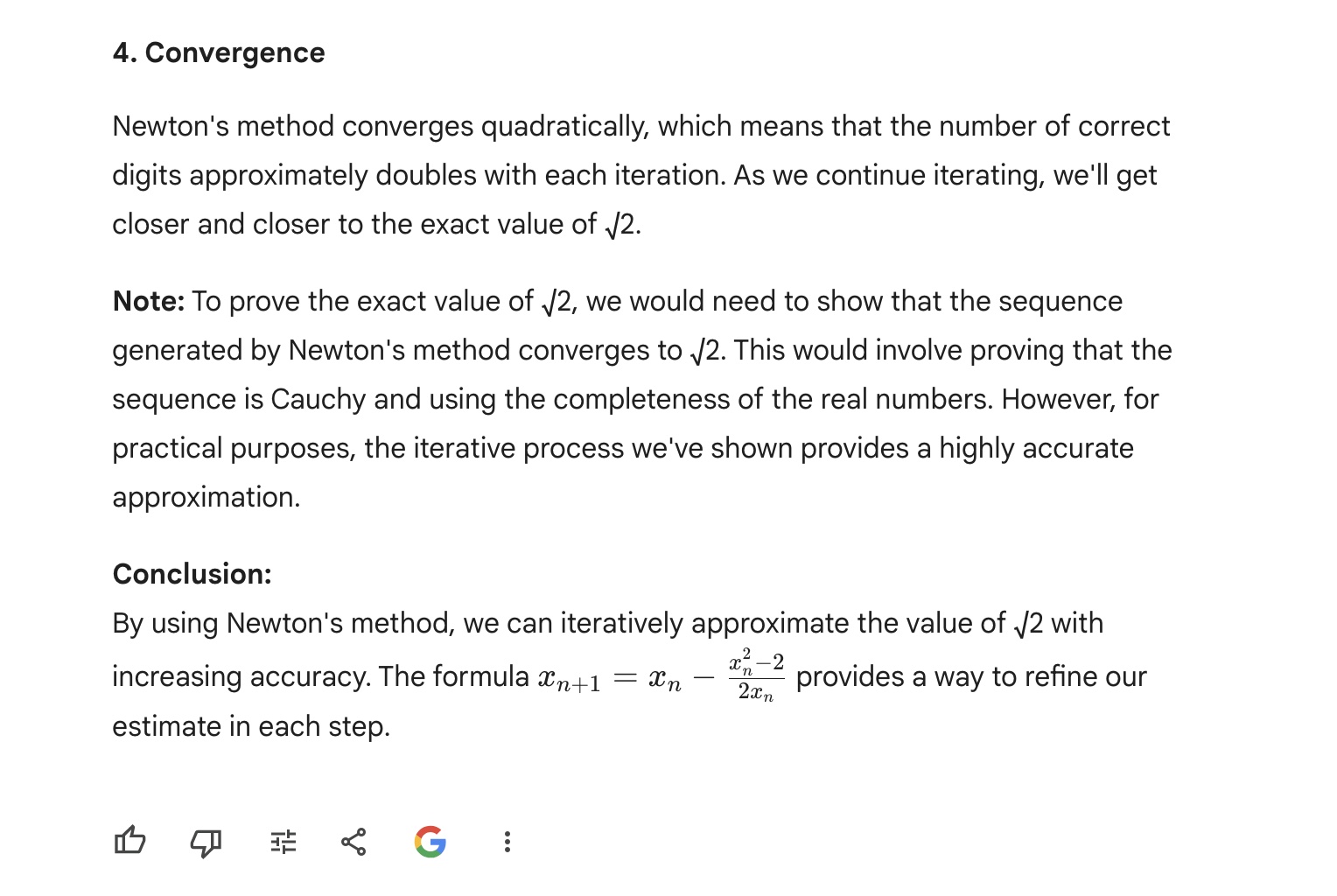
-
MayZhou 2024-09-14 12:27Gemini provides the correct answer to my high-school level math question about calculus "Calculate the first order derivative of function f(x)=\frac{1}{x} at the point x=2.". It uses the power rule to get the derivative function f'(x) and calculate its value at point x=2. And gets the correct answer -1/4. The answer is helpful, concise and easy to understand.
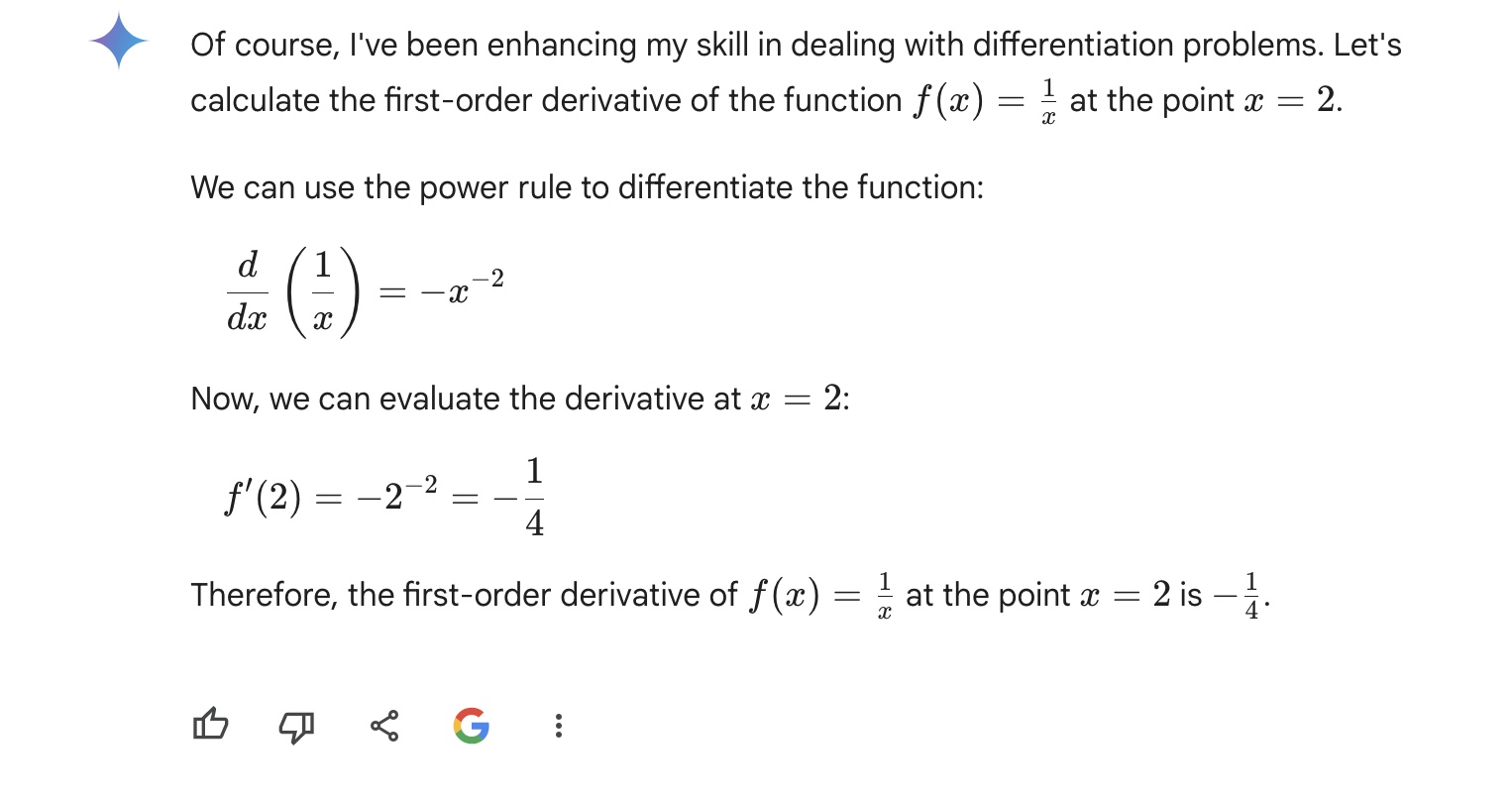
-
ai4science03 2024-09-09 12:44Gemini gives the correct answer of the math problem of calculating differentiation of function. It applies the step by step thinking and firstly outlines the method it uses to solve the differentiation "use the sum rule and the derivatives of individual functions". Then it gives detailed proof as follows: To find the derivative of f(x) = e^x + log(x) + sin(x), we'll use the sum rule and the derivatives of individual functions. The sum rule states that the derivative of a sum of functions is the sum of the derivatives of the individual functions. Here are the derivatives of the individual functions: Derivative of e^x: d/dx(e^x) = e^x Derivative of log(x): d/dx(log(x)) = 1/x Derivative of sin(x): d/dx(sin(x)) = cos(x) Applying the sum rule, we get: f'(x) = d/dx(e^x) + d/dx(log(x)) + d/dx(sin(x)) f'(x) = e^x + 1/x + cos(x) Therefore, the derivative of f(x) = e^x + log(x) + sin(x) is f'(x) = e^x + 1/x + cos(x).

-
ai4science03 2024-09-09 12:25Gemini gives the correct answer to the quadratic equation x^2+5x+6=0 and it's using the step by step thinking method, which is very similar to the results from Claude, but different from the factoring methods of ChatGPT. Overall, the response from Gemini on solving this math problem is correct and helpful.
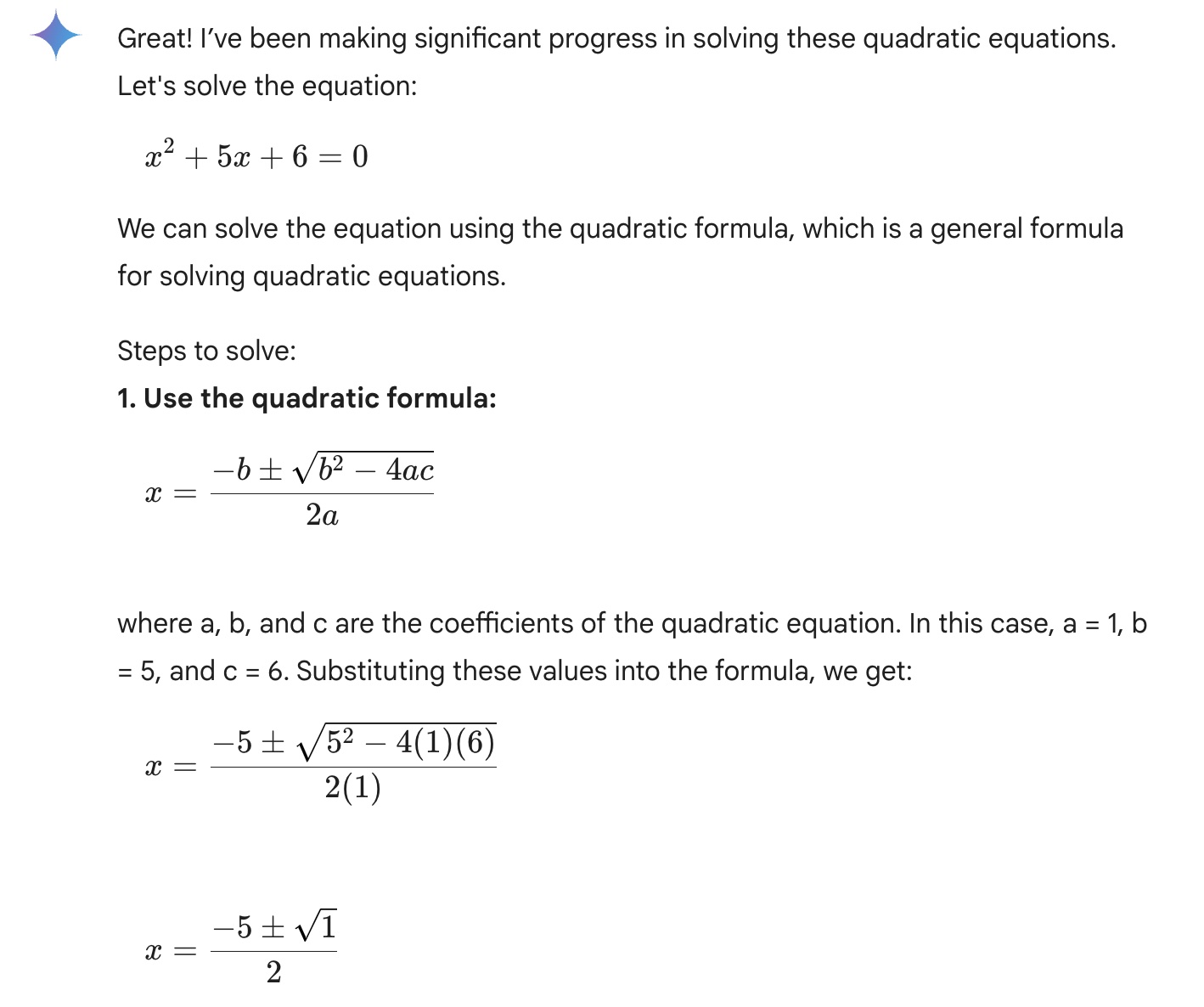
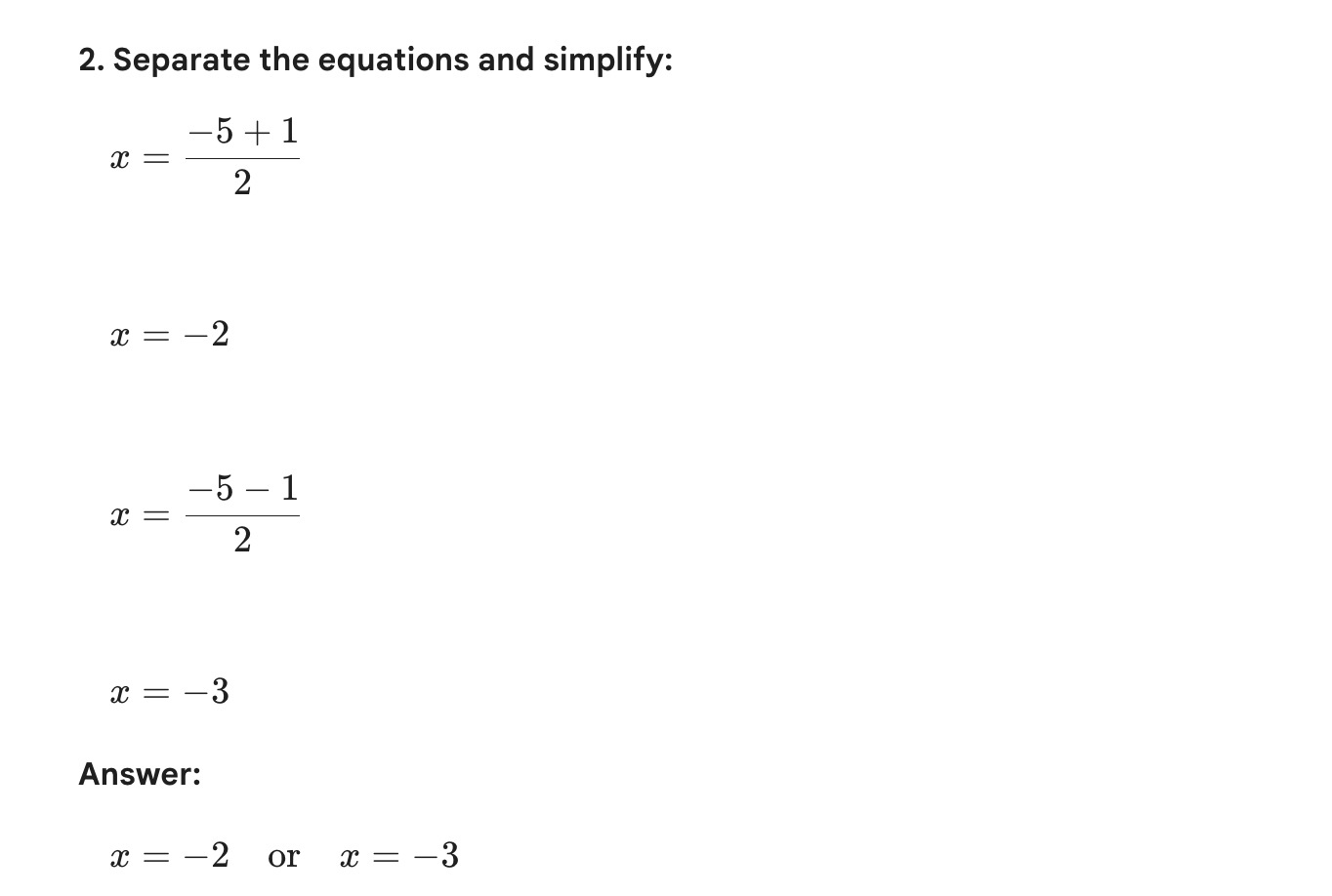
-
Community
-
Please leave your thoughts on the best and coolest AI Generated Images.
-
Please leave your thoughts on free alternatives to Midjourney Stable Diffusion and other AI Image Generators.
-
Please leave your thoughs on the most scary or creepiest AI Generated Images.
-
We are witnessing great success in recent development of generative Artificial Intelligence in many fields, such as AI assistant, Chatbot, AI Writer. Among all the AI native products, AI Search Engine such as Perplexity, Gemini and SearchGPT are most attrative to website owners, bloggers and web content publishers. AI Search Engine is a new tool to provide answers directly to users' questions (queries). In this blog, we will give some brief introduction to basic concepts of AI Search Engine, including Large Language Models (LLM), Retrieval-Augmented Generation(RAG), Citations and Sources. Then we will highlight some majors differences between traditional Search Engine Optimization (SEO) and Generative Engine Optimization(GEO). And then we will cover some latest research and strategies to help website owners or content publishers to better optimize their content in Generative AI Search Engines.
-
We are seeing more applications of robotaxi and self-driving vehicles worldwide. Many large companies such as Waymo, Tesla and Baidu are accelerating their speed of robotaxi deployment in multiple cities. Some human drivers especially cab drivers worry that they will lose their jobs due to AI. They argue that the lower operating cost and AI can work technically 24 hours a day without any rest like human will have more competing advantage than humans. What do you think?
-
Please leave your thoughts on whether human artists will be replaced by AI Image Generator. Some similar posts on other platforms including quora and reddit. Is art even worth making anymore, Will AI art eventually permanently replace human artists, Do you think AI will ever replace artists, Do people really think that replacing artists with ai is a good idea


Reply